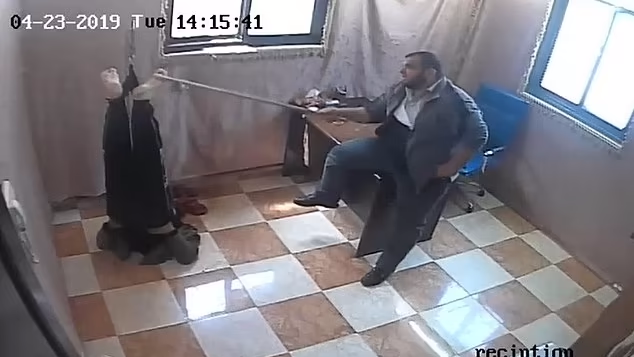Getting your Trinity Audio player ready...
The torture practices documented in Hamas prisons, which the IDF revealed on Sunday, came as no surprise to Gaza residents. The people of Gaza are all too familiar with the methods adopted by the terror organization, the personnel recruited for the horrific acts, and the fear that accompanies a summons to interrogation rooms.
“This was every normal Gazan’s nightmare,” says a prominent Gaza lawyer who himself experienced Hamas’s torture chambers. "Hamas has established an entire network of torture rooms and interrogation methods that have become the backbone of its rule. They used whatever was necessary to serve their interests, even lawyers."
According to him, “I was asked to represent detainees, and Hamas officials told me, ‘Ask the detainee clever questions and relay the answers back to us.’ If they suspected someone of collaborating with Israel, they’d instruct me to ask if he was offered a listening device. If he said yes, they told me, ‘Report it, and your role is done.’”
When the lawyer refused to cooperate, he was instantly labeled “incompetent,” a designation that harmed his career. After he posted a call to protest power outages, he was summoned for interrogation and tortured. "They hung me by my feet for hours, one of them hit my legs with a stick," he recalls. “For three days, I was interrogated and questioned. Eventually, they released me, warning me not to disrupt the public order. But I knew it was only a matter of time before they killed me.”
Hamas torture chamber
(IDF)
Hamas sorts Gaza’s citizens into four categories: “Neutral” (unaffiliated), “Supporter” (of Hamas), “Enemy” (Fatah and Islamic Jihad members), and “Brother” (religious Hamas loyalists who preach that Hamas’s rule is “the best”). Based on these classifications, the Hamas intelligence apparatus determines who needs to be tortured and to what extent.
Salafist residents of Gaza—devout, radical Islamists who established the “Army of Islam” aligned with al-Qaeda—have been frequent targets of Hamas’s torture. These Salafists, who often publicly condemned Hamas as “infidel” and protested the taxes imposed by the rulers of the enclave, moved from mosque to mosque speaking against the organization. In response, Hamas would interrogate, torture, and attempt to brainwash them.
Under Hamas rule, an unofficial rule developed: anyone who traveled to Israel for work, medical treatment, or trade was required to report for questioning the next day. If Hamas sensed unusual behavior, that person was often sent to the torture chambers. There, detainees would sit on child-sized chairs with bags over their heads, each assigned a number. On one occasion, a detainee was forced to stand on one leg, and if the other foot moved, he was beaten with a wooden stick.
Prison guards were divided into investigation teams—usually educated individuals skilled in interrogation techniques—and torture teams, mostly comprised of Jabaliya refugee camp residents who hadn’t completed their studies and were tasked with beating detainees indiscriminately, maintaining complete emotional detachment.
Dozens of detainees have died in Hamas prisons from torture. The latest victim was Issam al-Saafin, who was kidnapped, tortured, and killed in Gaza’s central prison solely for his affiliation with Fatah.
Get the Ynetnews app on your smartphone:







